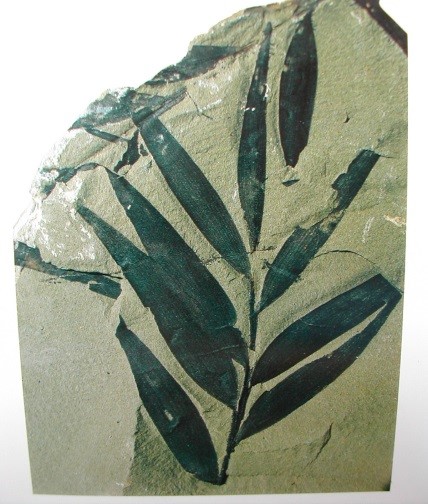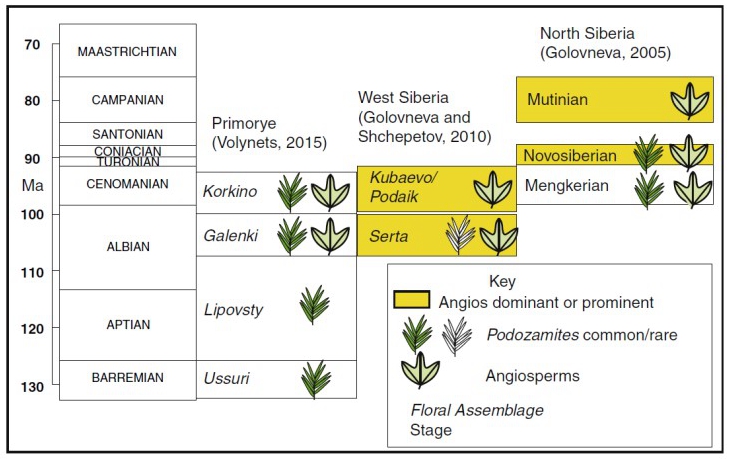
Fossil Podozamites leaf
An international team leading by Prof. WANG Yongdong from Nanjing Institute of Geology and Palaeontology, Chinese Academy of Sciences (NIGPAS) has conducted positive research progresses on biodiversity origin and radiation evolution of an extinct conifer plant (Podozamites) of the Mesozoic. Dr. Mike Pole, visiting professorship research fellow of the Chinese Academy of Sciences from New Zealand, collaborated with WANG Yongdong, as well as other Russian and Chinese researchers, have investigated on the rise and demise process of this plant group known more than 17 years ago in East Asia. This result was recently published online on the international geoscience journal Palaeogeography, Palaeoclimatology, Palaeoecology.

The distribution pattern of Podozamites during the Jurassic period in East Asia
Podozamites is a common morpho-genus established by Braun in 1843, which is used describing deciduous, shoot-dropping conifer with broad, multi-veined leaves. Morphologically, Podozamites is represented today by Agathis (Araucariacae) and Nageia (Podocarpaceae). It is indicated that during the Late Triassic–Early Jurassic, forests dominated by Podozamites were extensive in the mid-latitudes of eastern Asia. They appear to have been little-effected through the Triassic-Jurassic transition, but responded to climate changes later in the Jurassic. Progressively dried through the Middle Jurassic and aridity had developed in some areas in China by the Late Jurassic-Early Cretaceous, and the distribution center of Podozamites shifted north, to the Siberian region. By the late Albian, angiosperms had arrived in the Siberian area and risen to dominance. After this event, Podozamites became extinct. It is unexpected that as broad-leaved angiosperms took over, amongst the conifers it was the broad leaved, multi-veined Podozamites became extinct. This is the morphology that might have been expected to compete with the apparently more shade-forming angiosperms. This new results provide significant fossil evidence for exploring the co-evolution and radiation relationships for Mesozoic conifers and early angiosperms.
This study was funded by the State Key Project of Ministry of Science and Technology, the international visiting professorship and National Natural Science Foundation of China.
Article information: Pole, M., Wang Y.D.*, Bugdaeva, E., Dong C., Tian N., Li L.Q., Zhou N., 2016. The rise and demise ofPodozamitesin east Asia—An extinct conifer life style.Palaeogeography, Palaeoclimatology, Palaeoecology

A schematic interpretation of Podozamites and angiosperm distribution in Siberia around the mid-Cretaceous transition to an angiosperm-dominated flora
